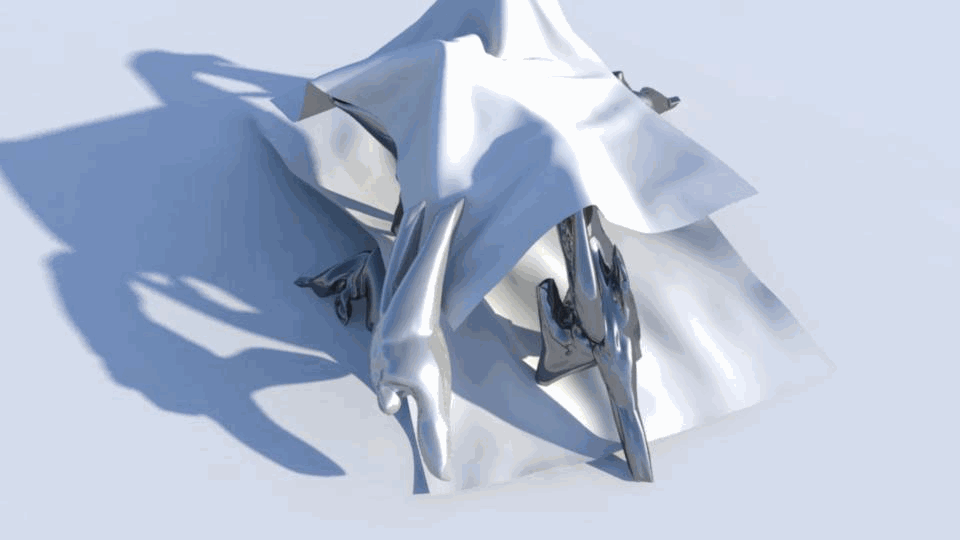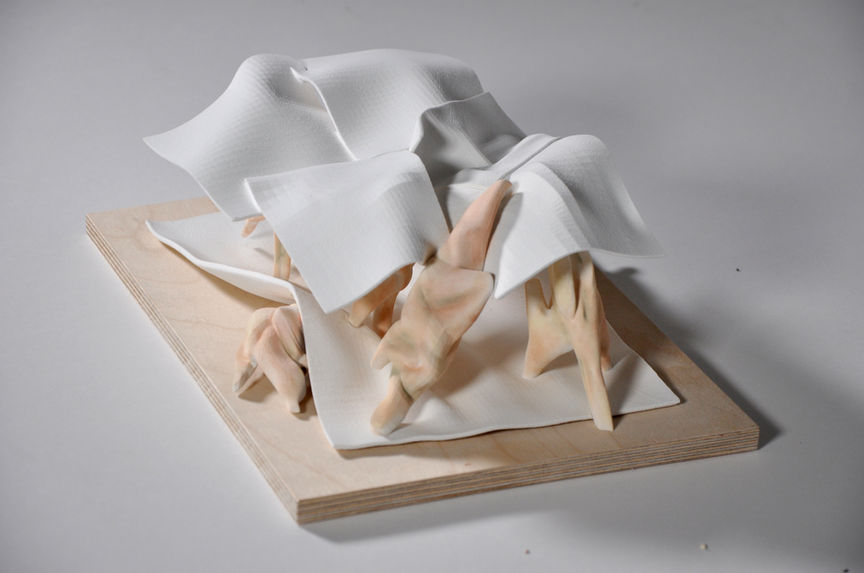Bavarian Rococo: A Retrospective Manifesto
GSD
2016 Electives
supr. Andrew Holder
w/ Bijan Thornycroft & Samantha Vasseur
Second Hut

Second Hut
The inquiry into the nature of anthropomorphic architecture begins with an assessment of caryatids. In their quality of being put to the task of carrying a slab comprehensively - i.e. from head to toes, without a dangling idle limb - the caryatids are in effect nothing but columns at the image of human form. In that sense, whatever anthropomorphic character they pretend to is a metaphor of human appearance rather than one of human physiology. Caryatids present the human body in a state rather than an apparatus of tendencies.
If the Maison Dom-Ino reveals the distinct functions of slab and column, the Second Hut casts the anthropomorphic column against the object of the slab. Counter to the typical sequence of assembly, the slabs of the Second Hut precede the columns in their placement, as the found objects. The anthropomorphic columns, charged with intention, populate the slabs and seek to move them apart vertically. The stair, in turn, uses the upper slab to pull itself up, and tilts both affected slabs as a consequence. The intention of the column is directed toward pre-existing entities that differ from itself in their nature. This ultimately gives one a collapsed chronology of architectural construction, in which the effort of man does not serve to place effective architectural parts, but rather, embodies both the effort of construction and firmitas. This is a group project completed Bijan Thornycroft and Samantha Vasseur.
Zwiefalten Abbey




We find in the physical expression of intention an occasion for architecture to deploy anthropomorphic principles: an arm reaching upward in the objective of supporting the slab, rather than already being in a structurally effective position. The dimension then restituted to the anthropomorphic element is that of time, regardless of its manifestation in static terms. Human bodies are not in themselves structural means, but they can serve to that end through intentional readjustment of their limbs relative to one another. To represent them as actualized columns omits the internal resistance characteristic of human physicality. Rather, an arm stretches out, not to achieve sculptural contrapposto, but as the intention of a final position. Intention, in turn, branches into two kinds: that of physically reaching the load in order to support it on the one hand, and that of shifting the center of gravity to retain equilibrium and remain operative. In the photograph of the 1945 US capture of Iwo Jima island, the man appearing on the left is an instance of legible intention of an action that is not actualized.
After Primitive Hut




















